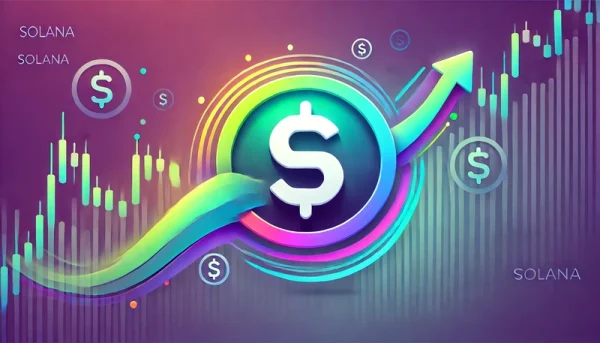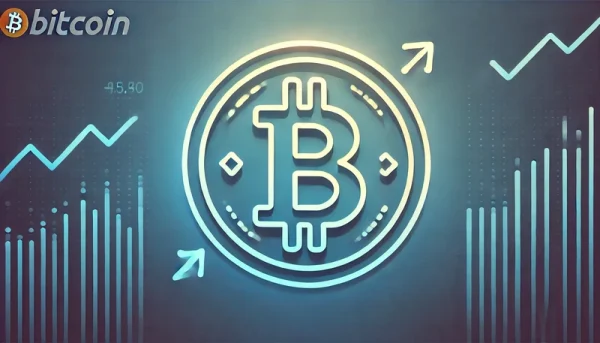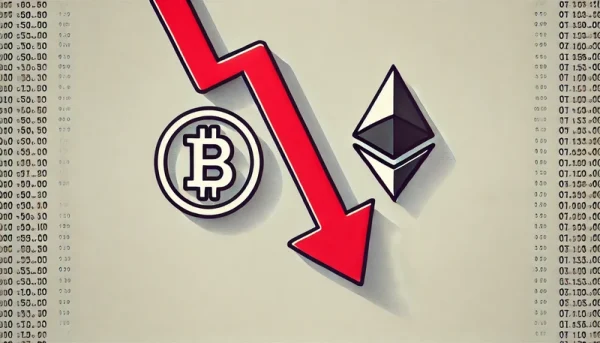Chainlink (LINK)








Statistics
| Volume | 1034675497.05 |
| Marketcap | 14184321048.89 |
| Avail. Supply | 638099970.45 |
| Total Supply | 1000000000.00 |

LINK Historical Price
2017
Chainlink was created in 2014, though it didn’t launch until 2017. The initial price of LINK was around $0.11.
2018
Throughout 2018, LINK's price fluctuated between $0.15 and $1.00.
2019
LINK's price started gaining traction, moving from around $0.50 at the beginning of the year to approximately $2.25 by the end of 2019.
2020
In July 2020, LINK reached a new all-time high of over $8.00. In August 2020, LINK briefly surpassed $19.00.
2021
In May 2021, LINK reached its all-time high of around $52.88 during the broader cryptocurrency market rally.
2022
The broader cryptocurrency market faced a correction. LINK's price reflected this downturn, falling to around $6.00-$10.00 for most of the year.
2023-2024
LINK's price remained relatively stable compared to the volatile early years, trading in the $7.00-$15.00 range. In June 2024, LINK's price was approximately $10.00.
About Chainlink
What is Chainlink (LINK)?
Chainlink is a decentralized oracle network that aims to connect smart contracts with real data. It is a middleman between smart contracts and external data sources, enabling blockchain-based applications to securely interact with data feeds, web APIs, and traditional bank payments.
Key Features of Chainlink:
- Chainlink uses a network of independent oracle nodes to fetch and verify data, ensuring data integrity and minimizing the risk of single points of failure.
- Chainlink provides secure and reliable data feeds for various purposes, such as price feeds for decentralized finance (DeFi) applications, weather data for insurance contracts, etc.
- Chainlink facilitates interoperability between different blockchain platforms, allowing data and assets to move across chains.
- Chainlink VRF (Verifiable Random Function) provides secure and verifiable randomness for use cases like gaming and lottery applications.
Who Founded Chainlink?
Chainlink was founded by Sergey Nazarov and Steve Ellis in 2017.
Sergey Nazarov is the co-founder and CEO of Chainlink. He has a computer science and entrepreneurship background and has been actively involved in the blockchain space for several years. Before Chainlink, he co-founded Secure Asset Exchange, a decentralized exchange, and CryptaMail, a decentralized email service.
Steve Ellis is the co-founder and CTO of Chainlink. He is a software engineer with experience in secure and scalable systems. Before Chainlink, he worked with Sergey Nazarov on Secure Asset Exchange and has a background in developing highly reliable software systems.
Chainlink Oracle Network
Oracles
These nodes in the Chainlink network fetch and verify external data independently. They ensure that the data provided to smart contracts is accurate and tamper-proof.
Data Feeds
Chainlink offers a variety of data feeds, such as price feeds for cryptocurrencies, commodities, and other financial data, weather data, sports scores, and more.
Reputation System
Chainlink uses a reputation system to evaluate the performance of Oracle nodes. Nodes consistently providing reliable data are rewarded, while those performing poorly are penalized.
Chainlink Keepers
Chainlink Keepers handle automated smart contract maintenance tasks, such as triggering contract functions at specified intervals or under certain conditions.
Chainlink Economics 2.0
Chainlink Economics 2.0 refers to the enhanced economic model designed to further decentralize the Chainlink network, increase the use of the LINK token, and ensure its long-term sustainability and security.
Staking
- Staking is introduced to increase the security and reliability of the Chainlink network. By staking LINK tokens, node operators and community members can earn rewards while also committing to providing reliable services.
- Node operators stake LINK tokens as assets, which can be partially withdrawn or sliced if they engage in harmful or inaccurate data-producing activities. This guarantees the accuracy of the data presented and encourages nodes to behave properly.
Enhanced Incentives
- Node operators earn LINK tokens from data and staking rewards, creating a dual incentive model that aligns their interests with the network's security and growth.
- Fees paid by users of the Chainlink network, such as smart contract developers needing data feeds, are used to pay node operators and stakers.
Sustainable Growth
- Chainlink Economics 2.0 aims to ensure the network's long-term sustainability by creating economic incentives that encourage continuous improvement and expansion.
- The economic model drives greater adoption and utilization by increasing the utility of the LINK token through staking and expanding the range of services offered (like Chainlink Keepers and VRF).
Decentralized Governance
- Chainlink Economics 2.0 emphasizes decentralized governance, allowing the community to participate in decision-making processes regarding network upgrades, staking parameters, and other critical aspects.
What is LINK Used For?
LINK is the native use token of the Chainlink network, and it serves several functions:
Payment for Services
Users pay LINK tokens to node operators for their services, such as data retrieval, off-chain computation, and data delivery to smart contracts.
DeFi projects and other users pay for Chainlink’s reliable data feeds with LINK tokens.
Staking and Security
Node operators stake LINK tokens as collateral to participate in the network. This staking mechanism incentivizes nodes to provide accurate and reliable data, as they risk losing their staked tokens if they act maliciously or fail to deliver correct data.
Staking also aligns the economic interests of node operators with the health and security of the network.
Reward Mechanism
Node operators are compensated with LINK tokens for their work in retrieving and delivering data. The amount of LINK earned can vary based on the complexity and demand for their services.
Economic Security
LINK tokens help secure the network economically by ensuring that node operators are financially invested in the system's success and integrity.
Chainlink Network Security
Chainlink's approach to network security is multi-faceted, leveraging both technological solutions and economic incentives to ensure the integrity and reliability of the data provided by its oracles.
Here are the core elements that contribute to Chainlink's robust security model:
1. Decentralization and Redundancy
By using a network of independent oracle nodes, Chainlink mitigates the risks associated with single points of failure. No single node has control over the data, reducing the chances of manipulation.
Chainlink aggregates data from multiple sources to ensure accuracy and reliability. This redundancy helps prevent data manipulation and errors, as multiple sources are cross-verified.
2. Cryptographic Techniques
Oracle nodes sign the data they provide cryptographically, ensuring that the data's source and integrity can be verified.
Chainlink uses VRF to provide provably fair and tamper-proof randomness, which is essential for applications requiring secure random number generation.
3. Incentive and Penalty Mechanisms
Node operators are required to stake LINK tokens as collateral. If they provide incorrect data or act maliciously, their staked tokens can be slashed (confiscated). This economic penalty encourages nodes to act honestly.
4. Reputation System
Chainlink maintains a reputation system that tracks the historical performance of oracle nodes. Nodes with higher reliability and accuracy scores are more likely to be selected for tasks, thus motivating good behavior.
Users can view performance metrics for individual nodes, allowing them to make informed decisions when selecting oracles for their smart contracts.
5. Secure Data Transmission
Chainlink oracles use TLS to secure data transmission between off-chain data sources and the blockchain, protecting against data interception and tampering.
These adapters facilitate secure connections to APIs and other data sources, ensuring that data remains secure from origin to its delivery on-chain.
6. Audits and Formal Verification
Chainlink conducts regular security audits of its smart contracts and protocols. These audits are performed by reputable third-party security firms to identify and mitigate potential vulnerabilities.
Where applicable, Chainlink uses formal verification methods to mathematically prove the correctness of its smart contracts, further enhancing security.
How to Buy LINK?
To buy Chainlink (LINK):
- Create an account on a cryptocurrency exchange like Binance or Coinbase.
- Put money into your exchange account using a bank transfer or another cryptocurrency.
- Go to the exchange's trading section, find Chainlink (LINK), and buy it with your deposited funds.
How to Stake LINK?
To stake Chainlink (LINK):
- Use a wallet that supports Chainlink staking, like MetaMask or Binance Chain Wallet.
- Acquire Chainlink (LINK) tokens from a cryptocurrency exchange.
- Send your LINK tokens from the exchange to your wallet.
- Pick a staking platform that offers LINK staking, such as Binance Staking.
- Follow the platform's instructions to stake your LINK tokens and start earning rewards.
Chainlink Investment Risks
Investing in Chainlink (LINK) comes with certain risks before jumping:
Oracle Network Security
Chainlink relies on oracles to bring external data into blockchain networks. If these oracles are hacked or become corrupt, it could deliver inaccurate data, disrupting applications built on Chainlink.
Market Volatility
The cryptocurrency market, including Chainlink, is known for wild price swings. Be prepared for significant price fluctuations and potential losses.
Ethereum Dependence
Chainlink runs on Ethereum as an ERC-677 token. Any issues or bugs with Ethereum could also affect LINK.
Limited Use Case
Unlike some cryptocurrencies, LINK's main purpose is to pay node operators, not necessarily as a store of value or transactional currency. This could limit its long-term price appreciation.
FAQ About Chainlink Price
What is the current price of Chainlink (LINK)?
The price of Chainlink (LINK) fluctuates constantly. Our price index and chart show the live price.
How has Chainlink’s price changed over time?
Chainlink's price has grown since its launch in 2017, with big highs in 2021. You can check historical prices on the chart.
How do I buy Chainlink (LINK)?
You can buy Chainlink on cryptocurrency exchanges like Binance or Coinbase by creating an account and depositing funds.
What is the market cap of Chainlink?
The market cap of Chainlink is the total value of all LINK tokens in circulation. Check our site for live updates.
Can I stake Chainlink (LINK)?
Yes, you can stake LINK on platforms like Binance or use wallets that support staking to earn rewards.
What influences Chainlink’s price?
Factors like demand for its oracle services, overall crypto market trends, and developments in blockchain technology can affect Chainlink's price.
Is Chainlink (LINK) a good investment?
Chainlink has strong use cases, but like all cryptocurrencies, it comes with risks, including price volatility.
What makes Chainlink unique?
Chainlink’s decentralized oracle network connects blockchain smart contracts to real-world data, making it stand out.
Can Ethereum affect Chainlink’s price?
Yes, since Chainlink operates on Ethereum, any issues with Ethereum could impact LINK’s price and performance.
Where can I track Chainlink’s live price and market data?
Our price index and chart show Chainlink's live price, market cap, and historical data.